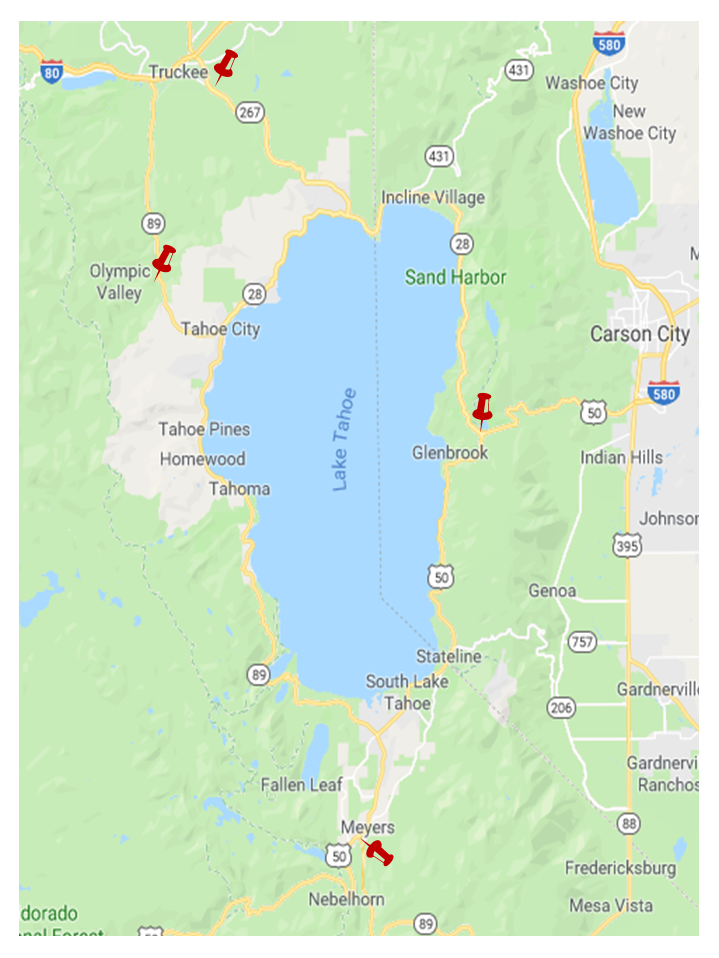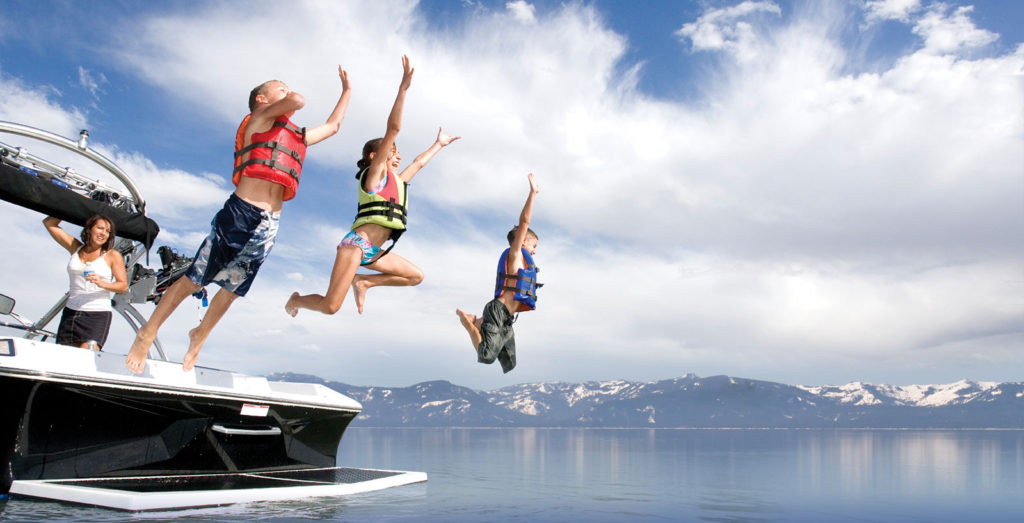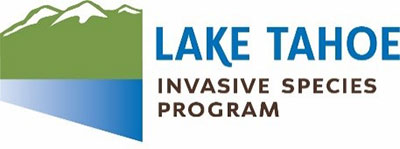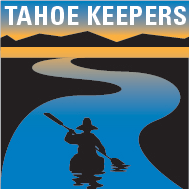Lake Tahoe, CA/NV
Roadside watercraft inspections stations aimed at stopping the spread of aquatic invasive species are opening for the season. Locations, hours of operation, and opening dates are online at TahoeBoatInspections.com and as follows:
Opening Wednesday, May 1:
8:30 a.m. to 5:30 p.m., seven days a week
- Meyers: at the junction of US Highway 50 and Highway 89, South Lake Tahoe
- Spooner Summit: at the junction of US Highway 50 and Highway 28 in Nevada
- Alpine Meadows: Highway 89, off Alpine Meadows Road north of Tahoe City
Opening Monday, May 20:
8:30 a.m. to 5:30 p.m., seven days a week
- Truckee-Tahoe: Highway 267, off Truckee Airport Road

Locations of watercraft inspection stations opening for summer season around the Lake Tahoe Basin.

The watercraft inspection program is entering its second decade of fighting aquatic invasive species at Lake Tahoe. The first 10 years were successful because of partnerships and support from the community, with no new documented invasions since the inception of the program.
“We are grateful to everyone who supports protecting Lake Tahoe from invasive species, especially the dedication and diligence of the Tahoe Resource Conservation District’s boat inspectors,” said Dennis Zabaglo, Tahoe Regional Planning Agency’s aquatic resources program manager.
All motorized watercraft require an inspection before launching into Lake Tahoe, Fallen Leaf Lake, Echo Lake, and Donner Lake. Invasive species, such as quagga mussels, New Zealand mudsnails, and hydrilla, are known to quickly colonize underwater surfaces. Knowingly transporting aquatic invasive species into Lake Tahoe is against the law, and violators are subject to fines.
This year, the annual watercraft inspection fee schedule is being simplified, condensing 13 categories to five to make it easier to understand and more accurately reflect inspection work and boat complexity. Decontamination fees were also modified to reflect the work it takes to decontaminate watercraft. To find out how the new fee schedule affects you, please visit: tahoeboatinspections.com
Remember, before arriving at inspections stations: Clean, Drain, and Dry your watercraft. “Save time and money by making sure to drain all water from the intake systems, clean out your vessel, and make sure it is dry,” advises Chris Kilian, AIS program manager for the Tahoe Resource Conservation District.
Transporting boats on roads in the Lake Tahoe Basin and the state of Nevada requires bilge plugs to be removed from the vessel. Draining watercraft during transit helps prevent the spread of aquatic invasive species. Boaters on the water should fill and drain ballast tanks in the same location, making sure they are at least 200 feet from shore.
Invasive species are highly opportunistic, and non-motorized watercraft are also capable of transporting aquatic invasive species. The Tahoe Keepers program informs the paddling community about the importance of inspecting their equipment, keeping Kayaks, paddleboards, fishing equipment, inflatable water toys, and life jackets from spreading invasive species. For more information visit tahoekeepers.org.

